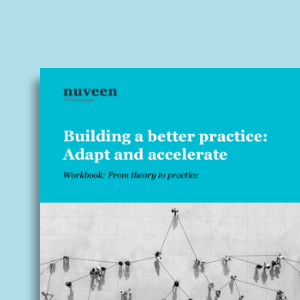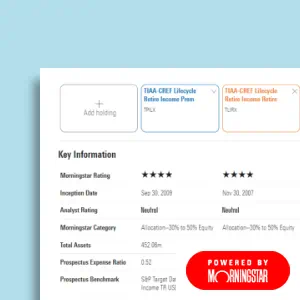Industry-leading retirement insights supported by 125+ years of investment expertise1
Access a number of forward-thinking retirement investment resources from the experts at Nuveen and TIAA, like our award-winning defined contribution publication, next.1 Read more about retirement investing with Nuveen.
If you are a financial professional and would like to learn more, please complete this form or call your regional retirement specialist.


























